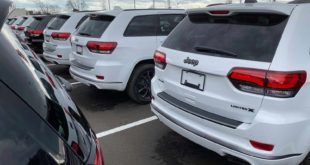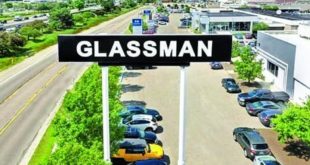
Generous automaker incentives and government stimulus efforts drove new- and used-vehicle sales during the onset of the coronavirus pandemic. But as these provisions fade so may consumer demand for auto loans and leases.
Auto analysts are split on whether sales in the third or fourth quarter will eclipse activity in the spring and early summer as the viral outbreak rages on in the U.S. Consumer auto loan appetite amid mounting economic uncertainty and high unemployment is difficult to discern, some say, all while the virus’ trajectory further clouds the crystal ball.
This summer’s sales frenzy — spurred by historically low interest rates and automaker incentives — likely exhausted any remaining pent-up demand that occurred during shelter-in-place orders that shuttered dealerships in key states in the spring, according to Cox Automotive.
Sales improved from the steep declines in March and early April but were nowhere near normal levels. New U.S. light-vehicle sales fell 24 percent in the first six months of 2020, according to the Automotive News Data Center. In the second quarter, sales volume fell 33 percent.
Auto lenders are exercising caution in lending decisions, telling investors during second-quarter earnings that recovery will be slow. They’re also bracing for further headwinds as customers exit forbearance programs. Auto originations declined in the second quarter across all credit tiers, the New York Federal Reserve reported last week, though the sharpest drops occurred for consumers in lower credit tiers.
Despite these challenges, Cox Senior Economist Charlie Chesbrough said in an email that July may have been the high point in 2020’s tumultuous vehicle sales recovery.
“The pace of the recovery will slow in the second half of the year,” he said. “This is due in large part to the spring stimulus wearing off, and the fact that supply is low for a number of products/manufacturers. The inventory issue — for both new and used — is going to be a major headwind for the industry for the foreseeable future.”
Fewer consumers say they’re considering a vehicle purchase in the next six months, according to a Cox study of consumer sentiment. In late July, 15 percent of respondents reported being in the market for a vehicle, down from 20 percent at the onset of the pandemic.
Without a second round of stimulus, “We should expect the market to become much more challenging,” Chesbrough said.
LendingTree, an online auto-finance marketplace, said auto loan inquiries on the site spiked during the height of automaker incentive activity. Jenn Jones, LendingTree’s auto expert, told Automotive News that the company expects auto loan demand to gradually decline for the remainder of the year.
“I don’t think we’ll see a sudden drop that people were fearing,” she said. “Americans still need to get to work, and if they do have the benefit of working from home, they still need to get groceries and check in on family members.”
Tyson Jominy, vice president of Power Information Network operations at J.D. Power, takes a more glass-half-full view. He said the third and fourth quarters of the year should easily clear the bar set by the second quarter. Sales likely will be down about 10 percent in the third quarter over 2019 figures, he said, with inventory levels posing the greatest sales risk.
“The percentage of vehicles right now transacting above [manufacturer suggested retail price] is just staggering in an industry that is built on dealer discounting,” he said. “Transaction prices were up 6 percent in July— that’s $ 2,000 more per unit consumers were spending this year than last year.”
Consumers in jobs that translated smoothly to remote environments have income security and are saving more by staying home. Americans also have adjusted to shopping in a pandemic. Dealerships rapidly adopted a digital environment over the summer and added cleaning procedures and social distancing processes to assuage customer concerns.
Widespread dealership closures on the scale seen in March and April likely won’t happen again, IHS Markit analyst Stephanie Brinley said. Sales will be stronger in the second half of the year for that reason — but not by much.
“If we say the second half is probably better than the first half, understand … it’s still a bad year,” she said. “We’re still looking at a year that’s going to be down 3 million units.”
Global sales fell 8 percent in a two-year period, from 2008 to 2009, compared with pre-recession levels. IHS Markit is predicting a 21 percent drop in global sales in 2020 alone compared with the prior year — driven largely by spring closures. The toll the virus is taking on the U.S. economy will further strain borrowers, Brinley said.
“The more rural you are, the smaller the market you are, the better off you’re doing,” Jominy said. “Of course it will impact sales, but I don’t think to the same extent it did originally. We’ve learned so much since then.”


